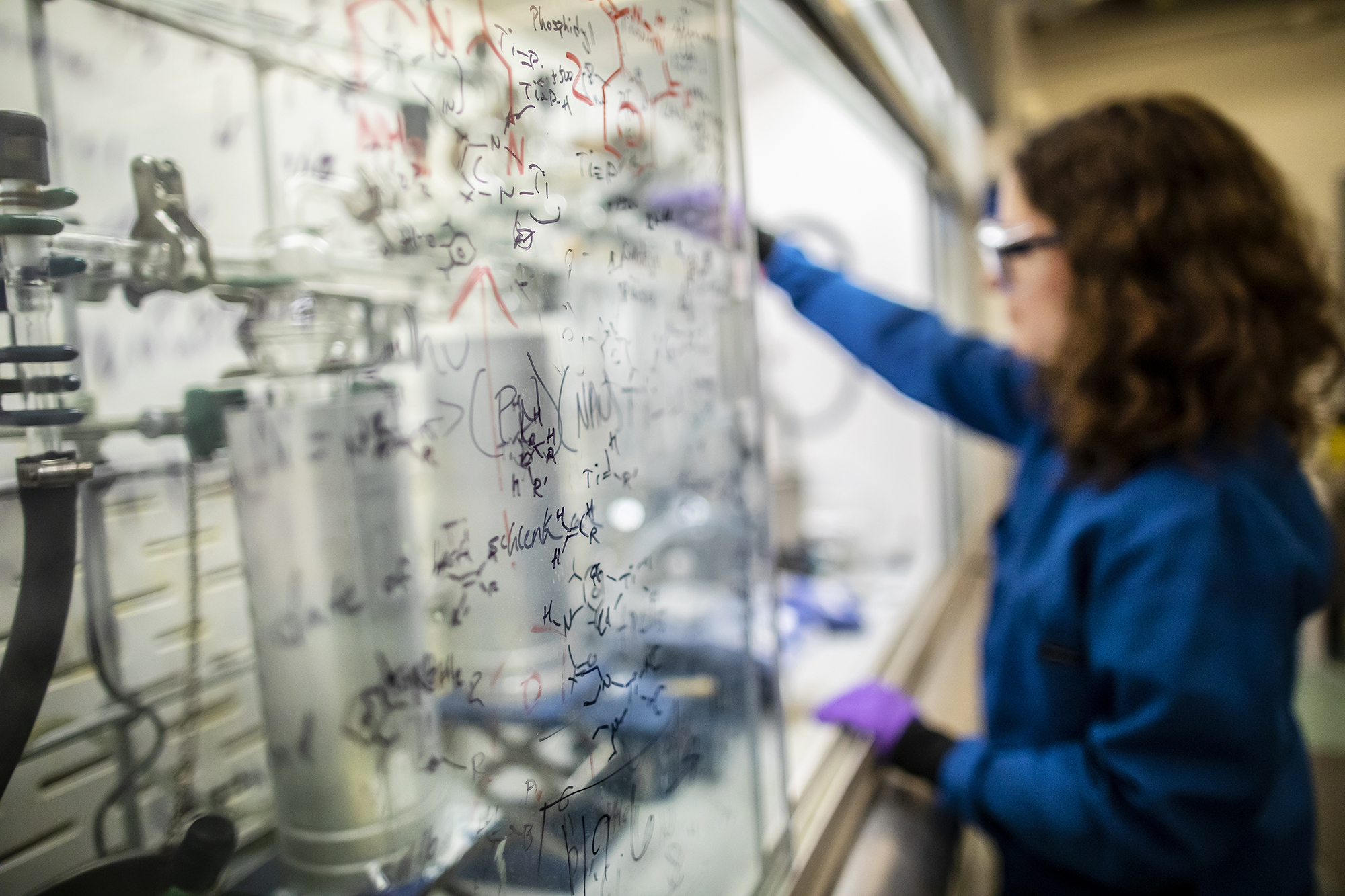
Image: Aditya Irawan/NurPhoto via AP Images

Chemistry is a fundamental part of any daily routine, from the oxygen molecules that make life possible to the energy that powers cars and homes. To a chemist, there is also a hidden world that lies beneath the tangible: an atomic-level view of the elements that form the physical world. Fundamental chemists study the basic structure of molecules, which are groups of two or more atoms held together by one of more chemical bonds.
Researchers in Daniel Mindiola’s lab in the Department of Chemistry are pushing the boundaries of fundamental chemistry by making “impossible molecules”—“impossible” because they are extremely reactive, unstable, or cannot exist under normal atmospheric conditions, such as in the presence of oxygen. Chemists are interested in studying them because of their potential to make chemical reactions more efficient and sustainable.
A study published in the Journal of the American Chemical Society describes how to make one such molecule, a complex of zirconium and a terminal nitrogen atom connected through multiple chemical bonds. These molecules are extremely reactive because of the large negative charge on the nitrogen atom, which makes them very difficult to stabilize and study.
“Zirconium nitride materials,” says lead author and graduate student Lauren Grant, “have broad applications and the material is very robust, but the challenge is that we can’t use standard methods to study these materials. So, by making a terminal molecular metal nitride instead, we can use other techniques, like NMR and X-ray diffraction, to better understand this chemical bond and how it can be useful in reactivity.”
Previously, the Mindiola lab isolated a terminal titanium nitride. Titanium and zirconium are in the same family of transition metals, but the challenge was that, due to the instability of certain zirconium intermediates, a completely different reaction pathway needed to be developed.
Making extremely unstable molecules requires non-conventional approaches, such as using indirect routes to the molecule of interest. If something doesn’t work as predicted, a lot of thought must then go into an alternative experimental design. “You have to first come up with a synthetic scheme that seems viable. If even one step doesn’t work, you have to go back and think about where you can go next. Chemistry is like a big puzzle: Every piece of an experiment has to be perfectly aligned for it to come together,” says Grant.
It took three years from the initial idea to a final result that could be published, although Grant says that the bulk of the work only took six months. When not working on the zirconium nitride project, Grant focused on other projects, which allowed her to come back to this molecule with a clearer mind. “Sometimes the best thing to do when you hit a sticking point is to shift to something else. Then, you can go back to the former with new insights,” she says.
Because the chemicals and reagents used by the Mindiola group can react with oxygen and moisture in the air, all of the experiments are usually done in a 100 percent nitrogen atmosphere that’s kept oxygen- and water-free. Researchers work in air-tight boxes using a pair of thick rubber gloves that are sealed to the side of the glass window.
Grant has been working in glove boxes for many years, but remembers how strange it can be when she trains new students or visiting researchers. “Sometimes just putting the gloves on can take someone new five minutes to do, so there’s definitely a learning curve,” says Grant.
The results from this study were unexpected. “Most people thought that, because zirconium is a little more electropositive than titanium, you might see a higher degree of negative charge on the nitrogen,” explains Mindiola. “But by changing a single atom in this molecule, we actually changed the acidity and basicity by 10 orders of magnitude.”
That is a huge difference in the world of chemistry. A change of 10 orders of magnitude is the same as turning something that’s an acid into a base, like changing orange juice into bleach.
“It’s probably been the most difficult molecule that I’ve ever made, so it definitely felt good when we got these results,” says Grant.
It’s unexpected results on challenging projects like this that highlight the need for continued fundamental chemistry research using an exploratory approach. “If you look at many of the greatest discoveries out there, they were accidents,” says Mindiola. “A chemist might be working on one thing until they notice something strange, and when they go to work on that ‘something strange’ they make an incredible discovery.”
The research was supported by the U.S. Department of Energy under Grant DE-FG02-07ER15893 and a National Science Foundation Graduate Research Fellowship Program award.
Daniel Mindiola is a Brush Family Professor of Chemistry in the Department of Chemistry at the School of Arts and Sciences at the University of Pennsylvania.
Erica K. Brockmeier

Image: Aditya Irawan/NurPhoto via AP Images

nocred

Image: Michael Levine

A West Philadelphia High School student practices the drum as part of a July summer program in partnership with the Netter Center for Community Partnerships and nonprofit Musicopia.
nocred